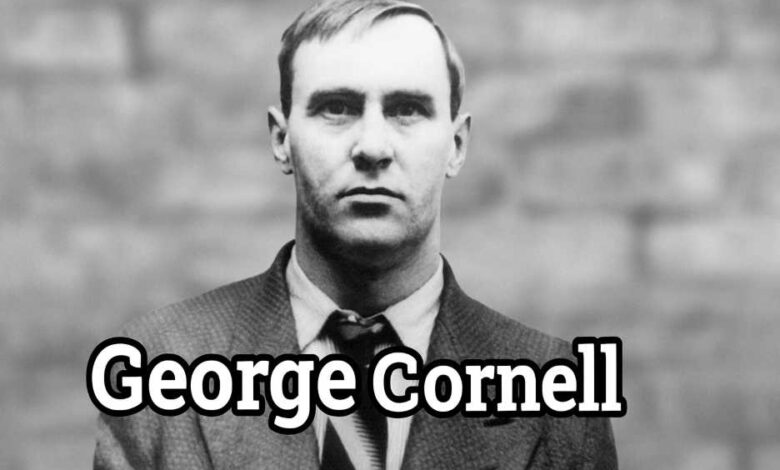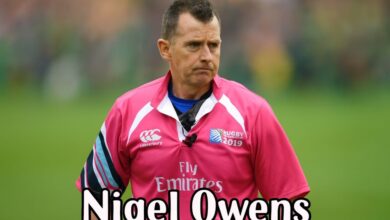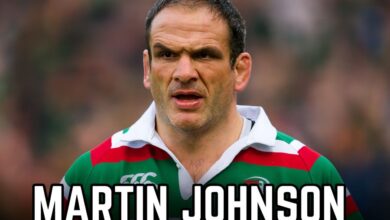George Cornell – The Fearless Gangster of London’s East End
A Story of Crime, Rivalry, and Tragic End

Table of Contents
ToggleIntroduction
George Cornell remains one of the most infamous names in the history of London’s criminal underworld. Known for his violent nature, daring confidence, and deep involvement in gang rivalries, he became a central figure in the legendary feud between the Kray twins and the Richardson Gang. His life was marked by poverty, crime, loyalty shifts, and ultimately, his shocking public murder at the Blind Beggar pub. The story of George Cornell is both a cautionary tale of crime’s consequences and a vivid chapter in British gangland history.
Quick Bio of George Cornell
| Attribute | Details |
|---|---|
| Full Name | George Myers (later changed to George Cornell) |
| Date of Birth | 13 November 1927 |
| Place of Birth | Stepney, East London, England |
| Nationality | British |
| Mother | Mary Ann Garrett |
| Stepfather | Joseph Cornell |
| Date of Death | 10 March 1966 |
| Place of Death | Whitechapel, London (The Blind Beggar pub) |
| Age at Death | 38 |
| Cause of Death | Gunshot wound (murdered by Ronnie Kray) |
| Burial | Camberwell New Cemetery, South London |
| Occupation | Gangster, Enforcer |
| Known For | Member of Richardson Gang, feud with Kray twins |
Early Life of George Cornell
George Cornell was born as George Myers on 13 November 1927 in Stepney, East London. Raised in a working-class environment, his early years were shaped by poverty and the harsh conditions of the docklands. His mother, Mary Ann Garrett, later married Joseph Cornell, and George along with his siblings adopted the surname Cornell. This change marked the beginning of a new identity for the young man who would eventually be remembered as one of London’s most feared criminals.
From an early age, Cornell engaged in work as a Billingsgate fish porter and later at the docks. But his working-class roots also exposed him to the darker side of East End life. Surrounded by petty thieves and hustlers, he quickly grew attracted to the power and influence of criminal networks. By his teenage years, he was already involved in small-time rackets and petty theft, building a reputation for toughness in the streets.
The Beginning of a Criminal Career
Cornell’s first brush with the law came in October 1944, when he was convicted for stealing chickens. At just 17 years old, he had already begun a path that would lead deeper into organized crime. In 1945, he was sentenced to three years in prison for garage-breaking and larceny. These early sentences did little to deter him, and instead, hardened him into a more dangerous figure.
During the 1950s, Cornell faced multiple convictions. He was jailed for crimes including unlawful wounding, malicious damage, assault, and shop-breaking. Each conviction added to his reputation as a violent enforcer willing to use intimidation and brutality. The streets of East London soon recognized George Cornell not just as a petty criminal but as a man destined to play a larger role in gangland rivalries.
Rise in the Underworld
In his early years, Cornell was loosely connected with the Kray twins’ Firm. The Krays, Ronnie and Reggie, controlled much of London’s East End through protection rackets and organized crime. Cornell occasionally worked alongside them but was never considered a trusted insider. His unpredictable nature and independent streak kept him from becoming one of their most loyal men.
By the early 1960s, Cornell made a bold decision that would shape his fate: he aligned himself with the Richardson Gang, bitter rivals of the Krays. The Richardsons, led by brothers Charlie and Eddie Richardson, dominated South London and were equally ruthless in their methods. With them, Cornell found his place as an enforcer, feared for his aggression and ability to intimidate. He was often the man sent to settle disputes, deliver threats, or enforce debts.
The Feud with the Krays
The rivalry between the Krays and the Richardsons was more than just a turf war; it was a struggle for dominance over London’s criminal empire. Cornell, once loosely affiliated with the Krays, became a symbol of betrayal when he switched sides. This act alone ensured he was marked in the eyes of Ronnie Kray.
The tension escalated in December 1965, when at the Astor Club in Mayfair, Cornell publicly insulted Ronnie Kray by calling him a “fat poof.” The insult humiliated Ronnie, who was known for his violent temper and intolerance of disrespect. This remark planted the seed of revenge that would later lead to Cornell’s death.
In March 1966, a violent clash erupted at Mr Smith’s nightclub in Catford, where Richardson associates battled Kray supporters. During the fight, a Kray ally, Richard Hart, was shot dead. Rumors spread that Cornell mocked or even kicked Hart’s body, further fueling Ronnie’s rage and determination to kill him.
Murder at the Blind Beggar
The infamous moment came on the night of 9 March 1966. Cornell entered the Blind Beggar pub in Whitechapel with friends. Around 8:30 pm, Ronnie Kray arrived with his associate Ian Barrie. Witnesses reported that Cornell greeted Ronnie with a sarcastic remark: “Well, just look who’s here.”
In response, Ian Barrie fired warning shots into the ceiling. Ronnie then pulled out a 9 mm Luger pistol and shot George Cornell in the head at close range. The bullet struck him above the right eye, and he collapsed near a pillar in the pub. Cornell was rushed to the hospital but succumbed to his injuries in the early hours of 10 March 1966.
The murder, carried out in a busy public house, sent shockwaves across London. It became one of the most infamous gangland killings in British history, demonstrating the Krays’ fearlessness and brutality.
Trial and Conviction of Ronnie Kray
Although witnesses were initially reluctant to testify due to fear of retribution, police investigations intensified. Eventually, testimony was secured, and on 4 March 1969, Ronnie Kray was convicted at the Old Bailey for the murder of George Cornell. His twin brother Reggie was convicted of a separate murder in the same trial. Both were sentenced to life imprisonment with a minimum of 30 years, the harshest sentences of the time.
This conviction marked the downfall of the Kray empire. The boldness of Cornell’s murder had brought unprecedented police attention, ensuring the twins could no longer escape justice.
Legacy of George Cornell
George Cornell’s life was defined by crime, violence, and gang rivalries. While he did not amass legitimate business ventures or leave behind companies, his legacy is tied to the darker chapters of London’s history. His death symbolized the peak of gangland violence in the 1960s and became a turning point in the eventual downfall of the Kray twins.
Cornell’s story continues to fascinate crime historians, writers, and filmmakers. He has been portrayed in movies, books, and documentaries that revisit the turbulent era of London’s East End. His murder at the Blind Beggar remains one of the most notorious killings in British criminal history, cementing his place as a key figure in the saga of the Krays and Richardsons.
Conclusion
The story of George Cornell is both powerful and tragic. Born into hardship, he carved a path through London’s criminal underworld with fear and violence. His decision to side with the Richardsons against the Krays sealed his fate, leading to a brazen murder that shocked the nation. While remembered as a gangster, his death ultimately contributed to dismantling the reign of the Kray twins. George Cornell’s life and death remind us of the volatile nature of crime, power, and loyalty in the ruthless world of 1960s London.
FAQs about George Cornell
Q1: Who was George Cornell?
George Cornell was an English gangster from East London, best known for his role as an enforcer in the Richardson Gang and his infamous murder by Ronnie Kray.
Q2: When and where was George Cornell born?
He was born on 13 November 1927 in Stepney, East London.
Q3: Why did Ronnie Kray kill George Cornell?
Ronnie Kray killed Cornell due to gang rivalries and a personal insult Cornell made, combined with escalating tension after the murder of a Kray associate.
Q4: Where did George Cornell die?
He was shot at the Blind Beggar pub in Whitechapel on 9 March 1966 and died shortly after in the hospital.
Q5: What is George Cornell’s legacy?
Cornell is remembered as a symbol of London’s violent gangland wars, his death marking a pivotal moment in the downfall of the Kray twins.



